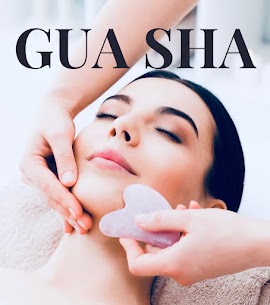Gua Sha - The Sculpted Secret

In an era where the beauty industry often leans on the glimmer of technology—lasers, serums engineered like pharmaceuticals, devices that hum and glow—there’s a quiet countercurrent gaining strength. Rooted in centuries of tradition, gua sha facial massage has emerged as the skincare equivalent of slow food: deliberate, ancestral, and unhurried in its rewards. And yet, its effects are anything but subtle.
Once relegated to the quiet corners of traditional Chinese medicine clinics, the gua sha tool—most often a smooth-edged stone sculpted from jade or rose quartz—has gracefully entered the vanities of skincare devotees, runway models, and wellness editors alike. But what exactly does this ancient ritual offer the modern face?
The Sculpted Secret
Unlike a quick cleanse or a five-minute mask, gua sha is a ritual. It’s not just about what you do, it’s how you do it. The stone teaches you to slow down, to tune in.
When practiced regularly, gua sha facial massage is believed to support lymphatic drainage—reducing puffiness and dullness—and to encourage circulation, promoting a lit-from-within glow that highlighters attempt to mimic. The technique, when done with care, can also tone facial muscles and define contours, especially along the jawline and cheekbones.
Many say it is like Pilates for your face After several weeks, you start to notice the way your skin often becomes firmer, lifted and a visible GLOW!
Fashion’s Embrace of the Stone
In fashion circles, gua sha has become the backstage essential you don’t see on camera. “It’s our secret weapon before the camera rolls,” says a stylist from a recent Paris campaign shoot, who prefers to remain unnamed. “Makeup can only do so much if the canvas isn’t awake. Gua sha wakes the face.”
Model Adesuwa Aighewi has spoken publicly about her ritual of gua sha every morning. “It’s meditative,” she told Vogue. “It’s my time to be present—with myself, with my breath.”
Not Just a Trend
Skeptics may dismiss gua sha as a fleeting TikTok trend, another moment in the rotation of wellness aesthetics. But that overlooks its deeper heritage. In traditional Chinese medicine, gua sha has been used for millennia to move stagnant energy (qi), reduce inflammation, and restore harmony in the skin.
The gentle manipulation of facial tissue can support lymphatic flow and improve skin tone over time and is safe, non-invasive addition to most skincare routines.
A Ritual, Not a Miracle
The allure of gua sha isn’t in instant gratification. It’s in its ritualistic grace—cool stone against warm skin, each stroke a whisper of intention. It reminds us that beauty, like fashion, is not merely about looking different. It’s about feeling different.
And in a culture that often values speed over slowness, perhaps the quiet power of gua sha is this: it asks us to pause, press, and breathe.
For readers new to gua sha, experts recommend starting with light pressure, clean skin, and a facial oil to help the stone glide. Authenticity matters—opt for real stones over plastic imitations, and learn proper technique to avoid tugging or bruising. In beauty, as in style, grace lies in the details.
